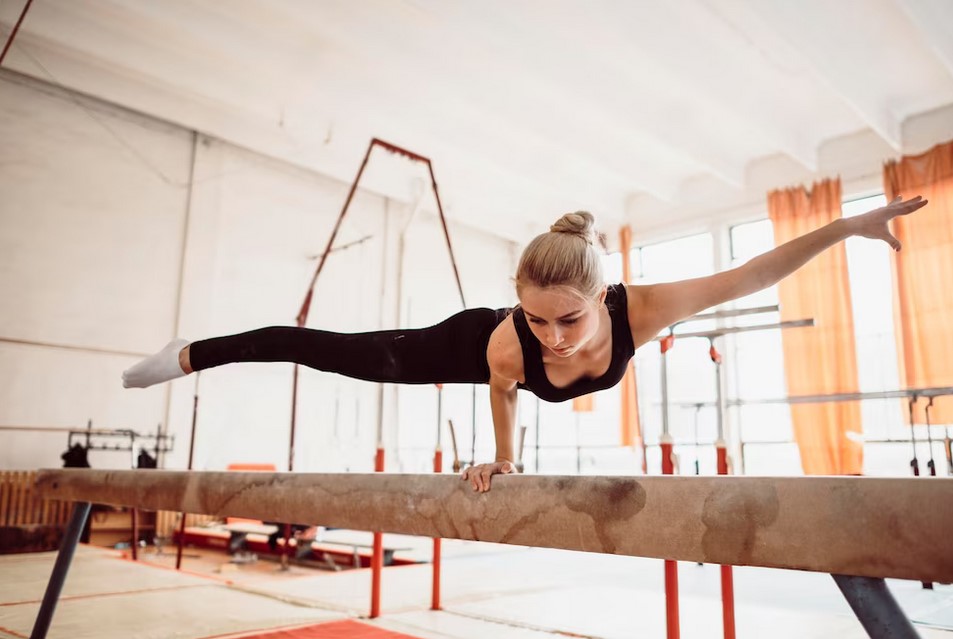Gymnastics is a captivating sport that combines strength, flexibility, agility, and grace. It requires years of dedication, discipline, and skill development to excel in this demanding discipline. Gymnasts progress through various levels, each marked by specific skills and requirements. This article provides an in-depth exploration of the gymnastics skill progression, from beginner to elite, shedding light on the milestones and challenges faced by gymnasts along the way.
Foundations: Beginner Levels
In the initial stages of gymnastics, beginners build strong foundations by focusing on fundamental skills and basic techniques. This level is crucial for developing strength, body awareness, coordination, and flexibility. Gymnasts learn essential moves such as rolls, handstands, cartwheels, and forward/backward rolls. They also familiarize themselves with apparatus like the balance beam, uneven bars, vault, and floor exercise.
To progress to the next level, gymnasts typically undergo skill evaluations, where they must demonstrate proficiency in basic skills and meet specific requirements. The beginner levels serve as a solid base for future advancements, allowing gymnasts to develop proper form and technique.
Intermediate Levels: Building Complexity
As gymnasts advance to the intermediate levels, the complexity of skills and routines increases. Athletes focus on refining their technique, developing greater strength and flexibility, and expanding their repertoire of moves. The intermediate levels bridge the gap between the foundational skills and more advanced gymnastics.
At this stage, gymnasts begin training on advanced apparatus, such as the parallel bars and high bar for male gymnasts, and the balance beam and uneven bars for female gymnasts. They work on mastering skills like handstand forward rolls, backward rolls to handstands, front/back handsprings, and aerials. Routines become more intricate and incorporate combinations of skills, demanding increased precision and control.
To progress to the higher levels, gymnasts must demonstrate proficiency in the required skills and routines, showcasing their ability to execute moves with technical accuracy and artistry.
Advanced Levels: Towards Elite Status
The advanced levels mark the transition from recreational gymnastics to competitive excellence. Gymnasts at this stage showcase exceptional skill mastery, strength, flexibility, and artistry. They dedicate countless hours to training and conditioning to meet the rigorous demands of advanced skills and routines.
Advanced gymnastics involves dynamic moves like back and front somersaults, handsprings with twists, and intricate bar and beam routines. Gymnasts also begin incorporating release moves on the bars and high-flying flips on the vault. The emphasis on execution, precision, and artistry becomes even more crucial at this level.
Gymnasts aiming to reach the elite level must demonstrate exceptional performance, consistently meeting or surpassing the requirements of the advanced levels. It is at this stage that athletes may compete in regional, national, and international competitions, representing their clubs or countries.
Elite Gymnastics: The Summit of Skill
Elite gymnastics represents the highest level of achievement in the sport. These athletes possess extraordinary physical abilities, technical expertise, and mental fortitude. They compete at international events like the Olympic Games and World Championships, representing their countries on the world stage.
Elite gymnastics demands unparalleled skill execution and artistry. Gymnasts perform gravity-defying acrobatics, intricate bar routines, powerful vaults, and captivating floor exercises. They push the boundaries of human capability, captivating audiences with their grace, strength, and agility. To reach this elite status, gymnasts must undergo rigorous training regimens, maintain peak physical condition, and consistently deliver exceptional performances at elite competitions.
Table. Gymnastics Skill Progression Overview
| Level | Key Characteristics | Skills & Routines |
|---|---|---|
| Beginner | Focus on foundational skills, strength, body awareness, coordination, flexibility | Rolls, Handstands, Cartwheels, Basic Apparatus Use |
| Intermediate | Refinement of technique, increased strength and flexibility, introduction to advanced apparatus | Handstand Forward Rolls, Backward Rolls to Handstands, Front/Back Handsprings, Aerials |
| Advanced | Transition to competitive gymnastics, exceptional skill mastery and artistry | Somersaults, Handsprings with Twists, Intricate Bar and Beam Routines |
| Elite | Representing at international events, highest level of achievement | High-level acrobatics, Complex Bar Routines, Elite Vault and Floor Exercises |
To come to the point, gymnastics skill progression is a journey that spans from beginner levels to elite status. Each phase of progression builds upon the previous one, encompassing fundamental skills, increased complexity, and advanced techniques. Gymnastics requires unwavering dedication, discipline, and perseverance to reach the pinnacle of the sport.

